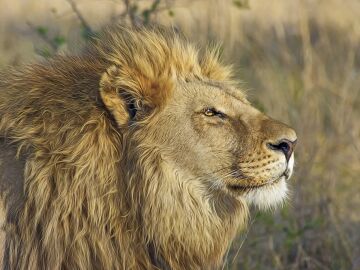
six lions were killed last Saturday in a national park in southern Kenya after 11 goats and a dog were killed in a human-wildlife conflict, the Kenya Wildlife Conservation Service (KWS) has confirmed.
“The ongoing conflict resulted in the deaths of six lions early today, after the lions 11 goats and a shepherd dog were killed last night“, the KWS has indicated in a statement sent to EFE, to which it added that “unfortunately, it is not an isolated incident, since in the last week four other lions have died, which adds up to a total of ten dead lions in the Amboseli (national park) ecosystem”.
For its part, the Kenyan Conservation Service has reported that a meeting has been held with the local community and National Government administration officials in Kajiado South sub-county to address recent incidents of human-wildlife conflicts in the area, and for seek solutions for a peaceful coexistence.
Among the slain lions was the oldest lion in the wild in Africa19 years old and baptized as Loonkito, who died at the hands of some shepherds last Wednesday after the animal entered a community to attack domestic cattlereported the conservation NGO Big Life Foundation.
Currently there are a few 30,000 lions in Africaand their populations continue to declineaccording to the latest data from the International Union for Conservation of Nature (IUCN).
Between the years 1993 and 2014, lion populations dropped by 43%above all, due to the loss of their habitats and the conflicts between these animals and human communities, which sometimes poison or attack cats to protect their cattle.
Lions nearly went extinct in southern Kenya earlier this century, but the efforts of local communities, rangers and conservation NGOs saw lion populations in Amboseli National Park and surrounding wildlife reserves increase six-fold between 2004 and 2020.
To avoid conflicts between lions and humans, special pens have been built for protect the cows from the Maasai After lion attacks, financial compensation is given to shepherds who have lost their cattle because of these cats, and communities have been involved in activities in the tourism sector to improve their economies.
Source: Lasexta
Ricardo is a renowned author and journalist, known for his exceptional writing on top-news stories. He currently works as a writer at the 247 News Agency, where he is known for his ability to deliver breaking news and insightful analysis on the most pressing issues of the day.












